Lei Feng Network: This article comes from DeeperBlue.
In addition to the driver's license, you will probably have to take a drone.
At least 200,000 to 300,000 UAVs are engaged in various flying activities across the country. On August 30, 2016, the Executive Secretary of the Chinese Aircraft Owners and Drivers Association (AOPA) and Director of the UAV Management Office Ke Yubao were Said when interviewed by the media. However, only 7,000 people have a driver's license.
Drones are expanding at an incredible rate, to the point where the state must begin to regulate. In contrast, the United States announced at the same time that in 2016 there will be 600,000 commercial drones flying over the United States.
The drone did indeed fire. It has become a no stranger to everyone's life. Even Zuckerberg recently visited the Pope, but also presented a drone model developed by Facebook himself.

Zuckerberg met the pope and presented the drone model site.
According to the purpose and function, UAVs can be divided into three layers: consumer, industrial, and military. Consumer drones refer to drones for personal or home use. They usually carry a GoPro and have shooting capabilities. Industrial-grade drones refer to unmanned aerial vehicles used by enterprises and governments, and are divided into agricultural and forestry plant protection UAVs, security drones, etc.; for different applications, their respective load capacities and wind protection capabilities are different.
In recent years, the market seems to be burning.
China Information Industry Network data show that during the three years from 2013 to 2015, the total sales volume of global consumer and industrial drones has more than tripled: 150,000, 378,000, and 570,000. Among them, consumer-grade drones are particularly rapid. The size of the market is about twice that of industrial-grade drones, and they grow at a rate of 50% per year.
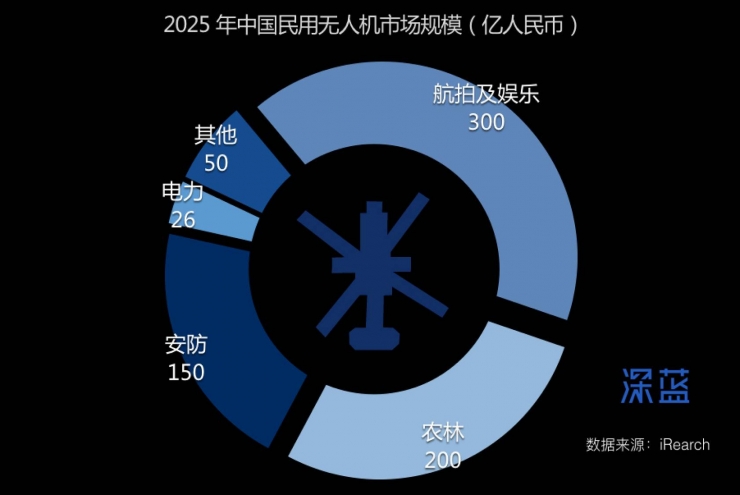
It is estimated that by 2025, the domestic market for drone aerial photography will be about 30 billion, agricultural and forestry plant protection will be about 20 billion, the security market will be about 15 billion, and electricity inspection will be about 5 billion, and the total scale will reach 75 billion.
Entrepreneurs have entered the stadium like birds. At present, there are a total of more than 400 drone companies across the country, and this number was only a single digit four years ago.
However, drones may not be a good business now. Single point technology is difficult to break through and industrial manufacturing is already mature. In the short term, most drone companies value supply chain integration and marketing; but in the long run, technology is king.
| Endurance: Proposal has not finished, no electricityThe technological bottleneck of drones is focused on the battery and battery life. Those who have used DJI know that with a drone in joy, they go camping. The most fearful thing is that they are flying and flying without electricity. The plane can't be found in the wild.
The life of a consumer drone cannot currently exceed 30 minutes. This also includes the time of start-up and return of the aircraft. Dajiang’s latest Elf 4 drone is trying to save more space to accommodate more batteries with a new airframe design. Its effective flight time is 25% higher than that of the previous generation of drones, but its battery life is only 28 minutes. .
The drone is small, but it is not easy to fly. Because it is a multi-rotor aircraft, relying solely on the pull of the propeller to lift the fuselage means that a large battery capacity is needed to maintain power.
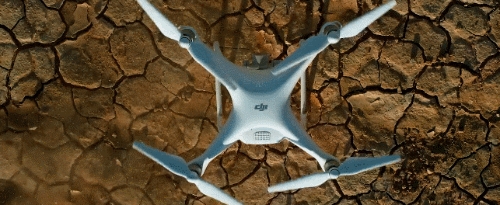
The aircraft can provide vertical force by the air pressure difference between the upper and lower wings, and the unmanned aircrew should lift itself up.
Then the question is, since the issue of battery life for consumer-class drones is subject to the battery, it is unlikely that the battery will have a big breakthrough at this stage.
Like electric cars, drones generally use lithium batteries. The ability of a lithium battery to store electrical energy is constrained by the electrode material itself, but from lead-acid to nickel-cadmium, nickel-hydrogen, and lithium-ion systems, lithium-ion batteries are already the best battery on the market today.
All battery companies are thinking about it. The world's top drone battery manufacturer, ATL (Amperex Technology Limited) spent a lot of money on the development of new UAV batteries, but the effect is quite general: the new battery life is only less than 6 minutes more than DJI. Even so, ATL's technology has become a leader in drone battery technology.
On the other hand, the technological development of other components of drones is placing increasing demands on batteries. To get a clear picture, drone manufacturers generally use the PTZ as a fixed camera device. The electric pan/tilt is very power-consuming, and drones installed after the pan-tilt will have an average 30% reduction in battery life.

The electric pan/tilt head is smaller in size and can adjust the shooting range freely, at the cost of power consumption.
The revolution has not been successful and comrades still need to work hard. R & D team can rely on algorithms, streamlined structure allows the UAV to fly a lot longer, but a word, as long as there is no breakthrough in battery technology, life can not be completely improved. Wang Feng proposed marriage with the drone to send diamond ring to Zhang Ziyi is OK, but want to photograph the whole process is not realistic.
| You can even assemble a home UAVYou can even assemble a drone at home. This is not an exaggeration.
Drones can be regarded as the leading product of technology. The technical barriers of consumer-class drones are mainly in upstream components: stronger basic hardware, and on this basis, more robust algorithms and software systems are developed. The midstream is responsible for assembly and the downstream is responsible for sales.
However, the upstream technology threshold is declining .
Since 2015, international chip giants have landed in the drone market one after another. The addition of chip makers such as Qualcomm, Intel, Samsung, and Nvidia has solved the problems of previous flying control components such as large size, low computational performance, and high energy consumption.
Qualcomm launched the "Qualcomm Snapdragon Solution" and was used as the main control system for UAVs. Nvidia has introduced two chipsets with powerful graphics capabilities to enhance the visual identification of drones. These chip computing capabilities are like two mountains. No one else can do better. Just close your eyes and follow Qualcomm.
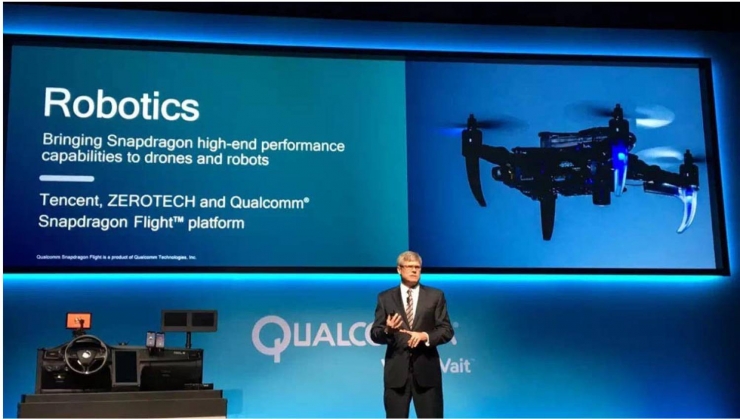
The unmanned aerial vehicle equipped with "Qualcomm Snapdragon Solution" debuted in the 16-year CES market.
Flight control - the "brain" of drones, can now be purchased for a few hundred dollars. Flight control is the key to the smooth flight of drones and is one of the most difficult technical links. The emergence of open source flight control platforms has saved drone manufacturers many things.
The APM (Ardu Pilot Mega) flight control is a mature benchmark for open source flight control. Through the open source Mission Planner, developers can configure the APM settings, connect external GPS sensors, and complete a variety of flight modes such as autonomous take-off and landing, and autonomous flight. When the indoor GPS signal is weak, the APM can connect an external ultrasonic sensor and optical current sensor to achieve fixed-height and fixed-point flight indoors.
Today, just a few hundred dollars, drone manufacturers can acquire flight control technology from open source flight control platforms such as APM and PIXhawk, and even purchase a complete set of solutions.
The innovation of these low-level technologies has shortened the production cycle. Even from the power system (battery, motor, ESC, etc.), the camera system (camera, head, etc.), to the software system, all can be placed on a single key Taobao.
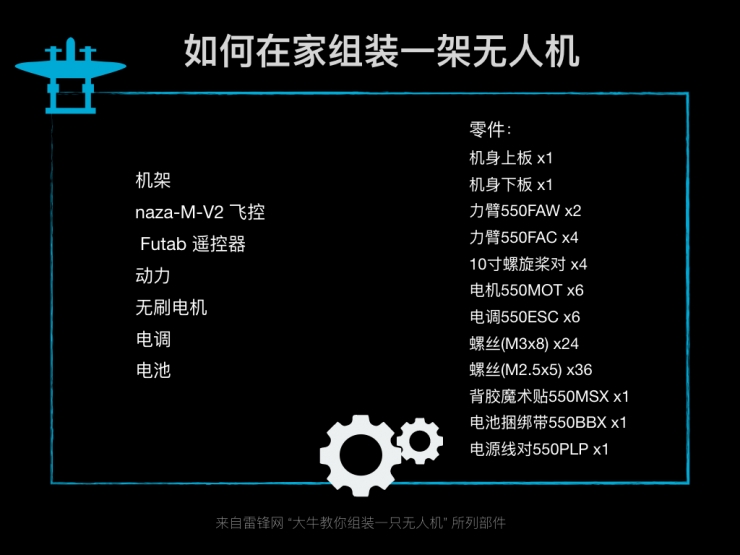
A tutorial on installing a drone at home on the Internet lists the required steps and parts. Anyone with no professional background can follow DIY's own drone.
The fact is also true: fewer than 10 companies have the entire industry chain from R&D, design, and mass production.
At present, most of the drone manufacturers are gathered in the midstream of the drone industry chain - doing OEM business. At the Global Sources Mobile Electronics Fair held in 2015, an unmanned aerial vehicle manufacturer once said in an interview with Nandu: “Shenzhen is the global OEM base for drones. Its own brand accounts for 10% of production. All other brands are foundry brands, accounting for 90%."
What do you think of? Shenzhen Huaqiang North's smart phone manufacturers also play this way. Google's Android system + Qualcomm, Texas Instruments chip, no innovative technology, mostly in competition costs, supply chain integration and marketing.
Drones have essentially become an industrial matter, not a technical one. Before all the key technical points get the next round of breakthrough, the drone industry can be said to be a business integrating the supply chain and exploring business models.
| Â Who can come to the end? Or innovation is kingThe upper limit of the battery level is there. At present, no one can fly for half an hour. Barrier technology has just started at almost every level, and Yuntai has matured. Similar to smart phone production, the endurance limit cannot be broken and industrial manufacturing has matured. But in the long run, Apple is getting stronger and stronger, and the cottage machine is finally dead.
According to the level of technology, consumer-grade drone manufacturers can be divided into high-, medium-, and low-tech enterprises. High-tech value-added companies will enter the positive cycle; medium-technology value-added companies will face big reshuffle; low-tech value-added companies will be eliminated.

Drone manufacturer pyramids and sales structure at each price point.
The consumer-class drone market is one of the largest in Xinjiang. The consumer market has long been dominated by Dajiang with a share of about 70%. As of the fourth quarter of 2015, 12 of the top 20 most popular models in the application for a commercial drone flight permission that had been approved by the Federal Aviation Administration (FAA) had come from DJI.
High-tech value-added enterprises have entered a virtuous circle.
DJI develops core software on closed-source systems. It means that Apple, like the image of the PC era, has taken an industrial chain from start to finish. In the future, it will continue to dig deep into image processing, PTZ control, visual aided stabilization, and anti-collision technologies. Rely on iterative products with more technological advantages to grab more market share and earn more profits and resources. Then increase the investment in technology research and development of new products and open up a bigger gap.
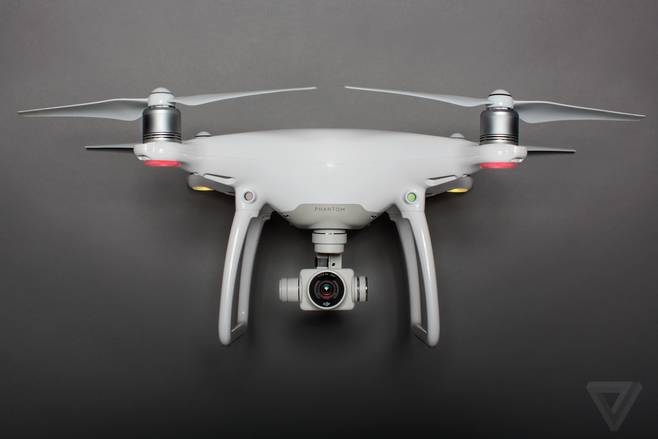
The Dajiang Wizard series drone is called "the most advanced consumer drone."
Medium-tech value-added companies reshuffled.
For such vendors, chip giants are undoubtedly God assists. In the single chip era, the technical advantages of drone head manufacturers in software algorithms allowed them to quickly occupy the market. The strong participation of chip giants offset the original technological advantages of some of the head manufacturers.
In order to take advantage of this shareholder's style, they face two paths: keeping pace with the borders of Xinjiang or opening up market segments .
Followed by the pace of Dada: Zero-degree intelligence control, soaring and so on. They keep up with the leaders in key technologies (optical flow assistance, obstacle avoidance, vision, etc.) to ensure that there is no gap between the product technology and Dajiang, not too far behind, and even to seize the opportunity to bend overtaking. These companies compete for seats in the remaining 30% of the market share.
However, zero-degree intelligence control and soaring of these companies are all models for sale , and they are vulnerable to the embarrassing situation of the “arms raceâ€.
UAV is a composite high-tech industrial product that includes a series of technology integrations such as flight control technology, integrated navigation technology, gyro-stabilized gimbal technology, imaging technology, intelligent image processing technology, wireless transmission technology and intelligent software processing technology, and others. Integrated circuit design, industrial design, and motor technology.
Dajiang develops the whole machine and does the entire industrial chain because it has sufficient strength. And these manufacturers, who want to build a car behind closed doors, have a wide range of technologies and they may be broad and unrefined. Companies without technology or resource advantages are likely to be eliminated and merged in the process of following the leader . Examples abound: 3DR announced its withdrawal from the consumer market, Zano declared bankruptcy, and the launch of new Lily drones was postponed.
The other road is transformation.
For example, Flydo does not consume consumer drones, but instead transforms it into a commercial drone, focusing on the agricultural plant protection machine market. Ubiquity unearths the drone system component solution market. Or, as Dobby, HoverCamera and others focus on the production of portable self-timer drones, compete with the Dajiang Bypass, tap the needs of market segments, and seek product heterogeneity in product technology.
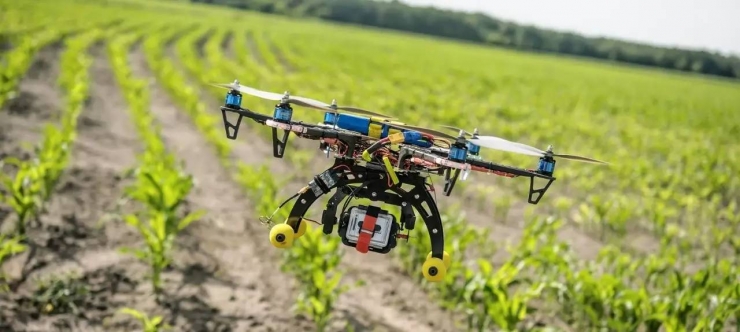
Agricultural plant protection drones have become the mainstream of transformation.
However, without the core technological advantages or price advantages, these companies will still be hunted down by giants. Dajiang has already launched the agricultural plant protection drone MG-1. Self-portrait drones have relatively low technical requirements. It is not difficult for Dajiang to do it.
Low-tech value-added companies are facing elimination.
Low-tech value-added companies mainly serve as integrated roles, adopting low-cost flight control systems, pan-tilt and unclear cameras to reduce costs. The first five pages of Taobao's hot-selling drones were opened, filled with low-end drones worth less than $300.
A media tracked the sales of drones in 120 stores on mainstream e-commerce platforms in China in July this year. The sales volume of the top five brands in the sales volume averaged around 7,000 units. Among them, MJX R/C, iDrone, Baby Star BBS, etc. all come from toy factory background. The Dajiang Wizard 3 monthly sales of 3361 units, only ranked tenth.
Such drones have low technical content, poor user experience, and blurry boundaries with toys. These drone manufacturers are mainly targeting the low-end market and will have a market within a certain period of time. However, as long as it falls to this territory, it will face the cruel situation of homogenous products, low profit margins, and fierce competition, and the company has limited development space.
Once the technology is iterated, hardware and software costs are reduced, and the price advantage of low-end drones will disappear. Low-tech companies with sales difficulties may be eliminated.
Lei Feng network (search "Lei Feng network" public number attention) Note: This article is deep blue DeeperBlue (WeChat public number: deepbluetech) authorized Lei Feng network release, reproduced please contact the authorization, retain the source and the author, not to delete the content.